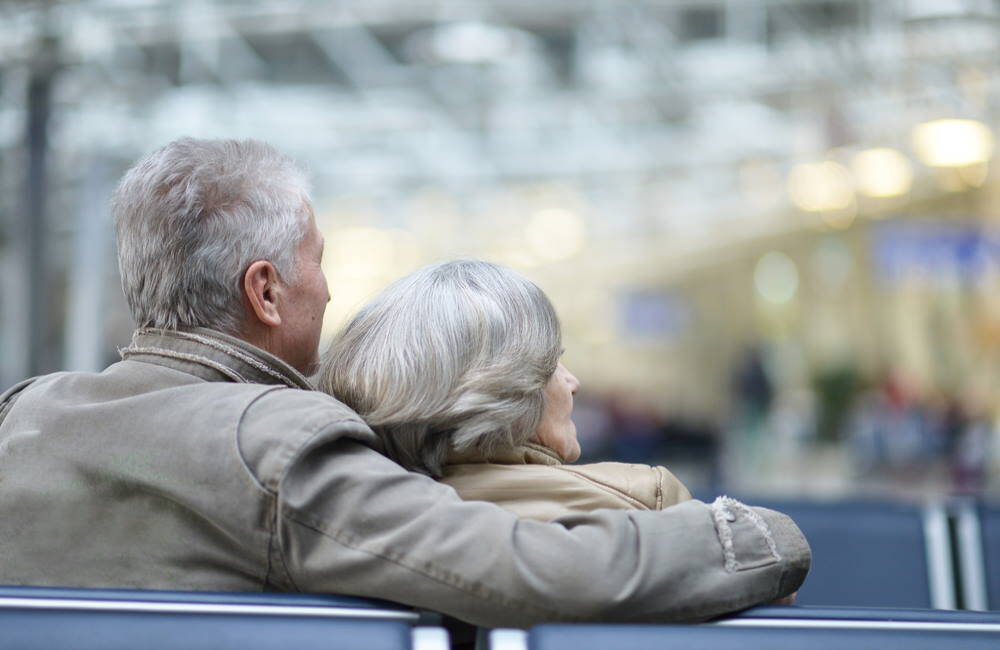Having Parkinson’s disease should not keep you from traveling. While it requires planning ahead and following smart guidelines, you can fly with Parkinson’s disease and enjoy a stress-free traveling experience.
Too often, those with Parkinson’s may feel they have to limit or even cancel travel plans. Certainly, you cannot make up plans on the fly as you those who do not have Parkinson’s may do. However, planning ahead is worth doing to enjoy the ability to fly with Parkinson’s disease.
Can I Hire a Nurse to Fly With Me?
What Is Parkinson’s Disease?
For those who are planning a trip for someone with Parkinson’s disease, it’s important to understand how it impacts the body. Parkinson’s is a nervous system disorder that worsens over time. It typically starts with small tremors in the hand. Eventually, the tremors increase in frequency and duration.
Symptoms include severe muscle cramps, impaired posture and balance, difficulties with speech and overall slowed movement. But none of these should make it impossible to travel. The key is planning ahead to deal with any potential issues.
As a person with the disease wrote for the Parkinson’s Foundation: “While traveling with Parkinson’s disease may not be a spontaneous, carefree experience, you can still enjoy a wonderful time away with some advance planning and preparation.”
How to Fly With Memory Loss or Dementia
How to Safely Travel with PD
If you want to fly with Parkinson’s disease, the first step is committing to following certain steps that can make a trip much safer and easier to manage. They include the following from the Parkinson’s Foundation and Web MD.
Book a non-stop flight. You don’t want the hassle of changing planes in a busy hub airport like the ones in Atlanta or Dallas.
Travel with a companion. It helps to have someone along who understands your condition, including a good friend, family member or flight nurse.
Carry important information. Make sure to carry the name of your doctor, insurance company, emergency contact and list of medications on your person in a wallet, purse, travel bag, etc. Also, carry something that clearly states you have Parkinson’s disease.
Use backpacks. You want your hands free to better maintain balance. You can manage this by using a backpack (or a fanny pack, if that is more comfortable) Also, always carry a snack and water in your backpack to take with medications.
Stay comfortable. Wear loose-fitting clothes and walking shoes that fit well. Also, sit near the bathroom on your flight to limit having to walk the length of the plane. Better yet, use the bathroom before you board so you can skip the cramped airplane bathroom completely.
Map it beforehand. Thanks to Google Earth, you can now go online and see images of roads and entrances around airports. You can also look at maps of the interiors of your departure and arrival airports. Find where you can use shuttles rather than walk, and remember you can contact the airport ahead of time to get a wheelchair. This can help you map out a course before you even leave the house.
Always leave early! You want more than enough time, not less.
Charge your phone. You don’t want to have to waste time trying to find a place to recharge your phone in the airport.
TSA Travel Tips for Disabled Travelers
Tips on Medication
It’s important to take steps that will keep your medications safe and easy to access.
- Pack your medication in a carryon bag, not a bag you plan to check
- Bring more medication than you think you will need for the trip
- Bring a prescription for refills
- Keep all medication in the labeled, original container to make it easier to get a refill and get through security
- Before leaving, talk to your doctor about medications you can or cannot take for common trip-related illnesses such as motion sickness or nausea
- Find out if any of your medications are sun sensitive
- Account for time changes, if needed, to take your pills at the right time
If you want to fly with Parkinson’s disease, you can. These simple ideas can get you started on the right path for planning an enjoyable and safe trip. There’s no reason not to visit loved ones or see a place you always wanted to see!

